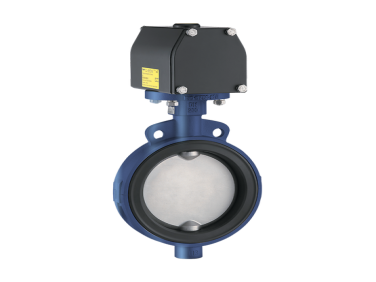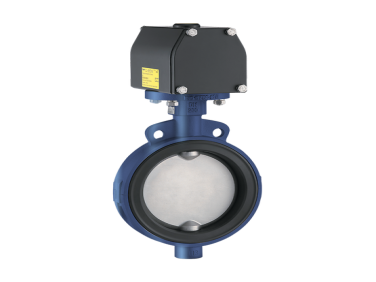Keystone Optiseal Resilient Seated Butterfly Valve with Powered Actuator
-
NG # 006490-HW-KEYSTONE-090
Manufactured by:
The Keystone OptiSeal Figure 14/15/16/17 is a resilient seated butterfly valve complete with powered actuator, configurable by power source, size, function and more.
Specification
Certifications CUTR, SIL capable, PED End Connection Wafer, Lugged Application Winemaking, Beverages, Automotive, Air Circulation Material Super Duplex, Hastelloy, Epdm Rubber, Duplex, Cast Iron, Carbon Steel, Buna-N, 316L Stainless Steel, 316 Stainless Steel Operating Temperature Up to 250 F (120 C) Pressure Class PN Process Connection Type PN16 Seat/Seal Type Resilient Shutoff Class Zero Leakage Valve Size NPS 10 / DN 250, NPS 8 / DN 200, NPS 6 / DN 150, NPS 4 / DN 100, NPS 3 / DN 80, NPS 2-1/2 / DN 65, NPS 1-1/2 / DN 40 Valve Size Standard DN Valve Type Butterfly Media Liquids, Water, Hot Water, Liquid, Air Stem O-ring
Keystone F89 Pneumatic Quarter-Turn Actuator Supply pressure Up to 8.3 bar Temperature -40°C to 150°C Type Quarter-Turn
Description
The Keystone Optiseal Resilient Seated Butterfly Valve is a high-performance valve solution designed for reliability and efficiency. Its top bushing absorbs actuator side thrust loads, reducing stress on the actuator and prolonging its lifespan. The actuator flange complies with ISO 5211 standards, ensuring compatibility with a wide range of actuators. The valve is coated with a high solid, glossy, silicone-free paint system, providing superior corrosion resistance, even in challenging environments. An extended body neck allows for the easy application of pipe insulation, while body locating holes simplify installation and help center the valve between flanges.
The valve's design focuses on longevity and performance. A rounded, polished disc edge provides full concentric sealing, resulting in lower operating torques, extended seat life, and bubble-tight shut-off. The seat is field-replaceable and fully isolates the body and stem from the flow, enhancing the valve’s durability. The primary stem sealing exceeds the pressure rating of the valve, preventing any leakage through the shaft area. For added safety, a secondary shaft sealing serves as a backup. Additionally, no flange gaskets are required for installation, which makes the process quicker and more cost-effective. The valve boasts a high Cv value, ensuring optimized flow, and top and bottom shaft bearings minimize friction, offering smooth operation across various body materials up to DN 300, excluding cast iron.




